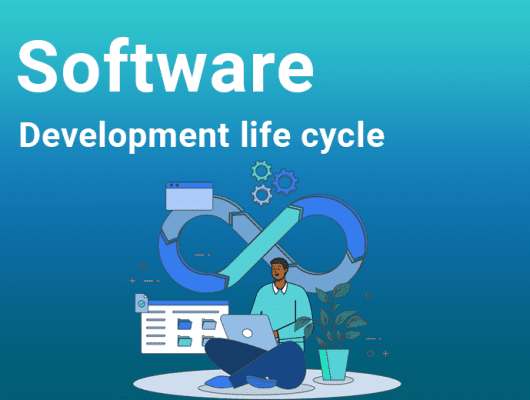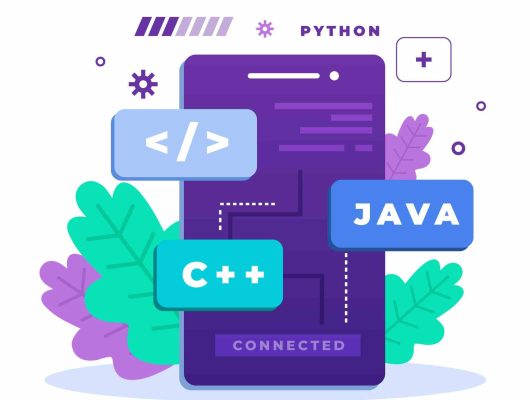
Mobile App Development Best Practices
Mobile app development is a sector that is experiencing hypergrowth. Presently, App Store and Google Play contain over four million apps in total. Yet, It is obvious that with the increase in technology, this number will increase at a steady rate.
Therefore, it is important to make your app talk of town while considering its abundance in the market.
But How? Well, this ultimate guide has discussed the ideal methods for creating a perfect app in 2024. So, let’s find out.
Table of Contents
1. Top 16 Practices to Prioritize in Mobile App Development
Here are the best practices you should consider while developing a mobile app.
1.1. Conduct Market Research
Conducting a thorough investigation is an essential component of mobile app development. Therefore, before planning, you must improve your skills by reading reliable mobile app development literature or make sure
- It is crucial not to disregard financial implications. Determine whether a mobile app is necessary by researching recent patterns in gross and net profits.
- Find out who you’re selling to and what they need. This can help you identify your target market for acquiring customers. It also allows you to forecast how many people will download and utilize your app once it’s live.
- Assess the obstacles that impede your progress. Determine who your niche’s rivals are. You can choose your competitors based on their market goals. Take note of their good and bad points and use that information to inform your app development strategy.
1.2. Choose a Mobile Development Method
You cannot design all the apps in the same way as it come in with variety of methods, such as
- Hybrid App
- Native App
- Cross Platform app
- Progressive app
Consider whether you want to develop hybrid, native, or cross-platform apps before commencing development. Each approach to developing an app possesses advantages and disadvantages.
But remember that, your app classification may play an essential role in influencing your decision.
1.3. Choose Right Platform

In order to improve the user experience, platform selection is a crucial part in mobile app development. Therefore, consider these ideal examples for creating software:
- Android
- IOS
- Multi-platform software
Keep in mind that there are benefits and drawbacks to every platform. Hence, it is necessary to conduct research to determine the best platform before making a final decision.
1.4. Prioritize security
Though it may not seem like a problem in the early stages of creation, consider your end product.
The software contains a large amount of data such as credit card numbers, home addresses, phone numbers, and other information. Therefore, it is important to put great emphasis on security from the start.
Remember that users can only give you information if your software is secure. A security breach could cause irreparable harm to your brand, making recovery difficult.
Therefore, developers must utilize encryption and two-factor authentication to protect sensitive data.
1.5. App Testing
In order to assure the proper functionality of your app, constantly observe your application’s output before distributing it.
For this reason, keep testing in mind throughout the mobile app development process. Application bugs may be tougher to detect and fix without regular testing.
In addition, standard reviews are another ideal option in assuring proper features and functions of your app. For this, utilizing beta testers is an excellent method to obtain user feedback on your software.
You can locate app evaluators through online resources like Beta Family. They will offer feedback and propose improvements to your application.
Moreover, to ensure user friendly apps undergo other testing as well. Such as
a. Functionality Testing
Your mobile app needs functional testing to work properly. This testing includes checking the app:
- Operations in business
- Various languages and forms of the user interface
- Multi-platform reporting
b. Performance Testing
Nonfunctional testing/ performance testing assures that your mobile app includes elements that are not critical for its functioning, such as:
- Safety Convenience
- Efficiency and availability
- Verifying applicable application programming interfaces
c. Manual Testing
Finally, manual testing involves examining actual environmental variables and scenarios, so verify:
- Verifying the state of the network
- Interruptions (such as notifications, calls, or text messages)
- Changing the app’s behavior and performance while moving it to the background
- Impressiveness of the app’s gesture functionality (e.g., force touch)
1.6. Make the User Interface invisible

Put the focus on the content and eliminate any extraneous features that don’t contribute to the user’s overall experience. Exemplifying actionable content with cards is an excellent idea. Ensure that the interface is comprehensive and light.
- Make sure there’s enough space to rest.
- Make effective use of white space to highlight key points.
Apps with a few functions are the most popular for user engagement. Therefore, restrict the number of features during mobile app development by prioritizing essential ones and eliminating extraneous ones.
You can also enhance user interface and user experience by prioritizing content.
Keep things simple and direct to make it easy to understand. Do not use technical jargon, acronyms, brand-specific words, or culturally unique assumptions the average person does not understand. Keep vocabulary simple and easy to grasp.
Moreover, to maintain readability and usefulness across sizes, choose a typeface that works well in different weights and sizes.
- The recommended minimum font size for readable text without zooming is eleven points.
- The body and picture texts should aim for a contrast ratio of at least 4.5:1.
1.7. Choosing the suitable App Monetization Model
One method of turning an asset into cash is through monetization. There are numerous ways that help you to generate the revenue using mobile app:
a. Implementing Advertising
Mobile app producers often offer two options: a paid, ad-free software or a free app with ads. Both alternatives have the potential to generate revenue.
b. Affiliate promotion
Affiliate marketing is the promotion of the goods and services of other companies for which an affiliate earns a commission. You can get benefits while working with a company that shares your interests and products.
c. Generation of leads
Lead generation uses internet material including job applications, blog posts, surveys, and coupons to convert prospects into customers. Instead of cold calling, lead generation lets you contact someone who is showing interest in your product and brand.
d. Develop robust code
Robust and reusable code has the potential to be sold for repurposing. You can market your code to other businesses if it works well. For example Imangi earned revenue by re-skinning and selling their game Temple Run to Disney
e. Transaction expenses
As an illustration, Airbnb and PayPal are two companies that offer transaction platforms. They acquire fees for every transaction and derive revenue from them.
f. Freemium
Users can access your application for free while paying for additional features. If you sell video games, you may give customers one episode for free and charge for each one. Or you can create the full game for free, but charge for certain features.
g. Subscription
Subscription is another great option to generate revenue. It enables you to entice customers to utilize your app for an extended period. Using this option developers charge monthly or yearly fee based on services the user chose.
1.8. Continuous Integration
Integrating third-party services during mobile app development can increase user retention and improve the overall user experience.
Consider an example of Uber, using third-party integrations with Uber allow Google Maps users to estimate ride prices and book an Uber from their location. Moreover, this is an excellent method for enhancing the credibility of your app.
1.9. Strong Core Code
Ensure you’re constructing a solid foundation right from the beginning of the planning process. The most crucial part of your program is the core features, around which all the other features are built.
- Keep track of your app’s critical features via an inventory system that prioritizes each function according to its significance. This acts as a checklist to determine which features should be deployed first.
- Create your own plugin with your own functionality set for seamless user interfaces.
1.10. App Speed
Ensure rapid loading times and seamless interactions by optimizing the efficacy of your applications.
Users are pressed for time and have high expectations for quick and responsive applications.
So, minimize elements such as excessive animations and optimize images to decrease rendering durations.
1.11. Accessibility is key
Apps that aren’t digitally accessible are a financial loss for brands. Therefore, make sure that you design your app that provides great accessibility to the users. Here are the few options that enhance the accessibility of your applications.
- WCAG (Web Content Accessibility Guidelines)
- Voice-guided navigation
- Alternative text for images
1.12. Focus on Simple Navigation
Users should be able to navigate your application without encountering any perplexity. So, use elements such as hamburger menus, tab bars, or bottom navigation bars during mobile app development to keep the user interface design simple and effortless.
1.13. Personalization
Let’s get back to discussing the user experience of your application. It is your responsibility to ensure that they have a personalized experience.
Therefore, develop code that facilitates the seamless integration of analytics and additional tools within your application.
With these features, you can keep tabs on your users’ actions and routines. Most importantly, this will help you to personalize their experience using this data.
1.14. Cooperation
Efficient collaboration with others is an essential component of being a successful developer. This will assist you in developing a perfect app.
It is unnecessary to be companions with every team member and spend every free moment together away from work. However, you must maintain professional and productive relationships with all individuals. This facilitates the development of more robust connections.
Therefore, try to become acquainted with your team’s other designers, developers, and supervisors.
1.15. No Web experiences
Avoid duplicating web experiences within an app. Users anticipate particular interface elements and interaction patterns in mobile applications, which is different from how you envision the structure of a website. Ensure that all design elements, including the color scheme and typography, maintain visual coherence.
- Instead of using underlined links, employ icons.
- Avoid redirecting consumers to a browser.
- Avoid developing pages that impede the flow of users by serving as dead ends.
- Verify that your product functions correctly even if you are not connected to the Internet.
- Permit the caching of data.
Find out more about Web Application: When, Why and How
1.16. Use Animation and Micro-interactions
Make the UI more personable and establish an emotional connection with your users through charming animation during mobile app development process.
Animations and micro-interactions, such as interactive data visualization, grab attention and set the mood without clutter or words.
Remember that, the transitions that occur instantly give the user the impression that the application responds quickly to their input.
Final Crux
Creating a mobile application takes time and effort. Along the journey, you will undoubtedly face several speed limitations. Although, having some guidelines as a reference is unquestionably beneficial.
Therefore, considering this guide can assist in simplifying your life as a developer.
So, achieve success with your application by using this guide as a reference or feel free to contact a reputable development company.
If you want top-notch mobile apps then think about going with Onyxtec. Where a team of experts ensure the seamless development of software with easy to use features .
Something extraordinary, you know? Obtaining your application will not incur any administrative costs. Sounds interesting! For further details, get in touch with Onyxtec.
FAQ
What are the three key factors you should consider while developing the app?
While Developing an app, you must keep an eye on
- User Experience
- App performance
- Security
How do I develop a mobile app of my own?
- Create a paper prototype of your app.
- Determine your requirements, and then create an app accordingly.
- Create your app by deciding which approach is best for your company.
- Build your app with an app builder—a no-code alternative.
- Make sure your software works on both iOS and Android.
- Put your app out there by submitting it and publishing it.




